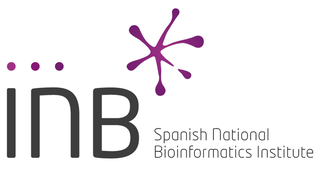Projects
SOLWATT targets to significantly reduce the water used by CSP plants (by 35% for wet cooled & by 90% for dry cooled). The project proposes to demonstrate the efficiency of innovations on solar field cleaning, power-block cooling, waterrecycling system, and plant operation strategy. Among these are solutions to reduce solar field water cleaning needs, anoperation and...
Heterogeneous Memory Systems; Profiling; Runtime Systems; Programming Models Supercomputers are a key tool for professionals from many disciplines to address society challenges, enabling them to perform, e.g., climate change simulations or genome analysis. EC's HPC Strategy, implemented in H2020, devises the need to bring Europe's high-performance computing technology to the...
INB, the Spanish National Bioinformatics Institute, was created in 2003 following the Swiss Bioinformatics Institute (SIB) model of a distributed organization of nodes with a central coordination hub. Since 2015, the INB is the Spanish node of ELIXIR (European Life Science Infrastructure for Biological Information). Since January 2018, the INB is the bioinformatics technology...
Big data applications processing extreme amounts of complex data are nowadays being integrated with even morechallenging requirements such as the need of continuously processing vast amount of information in real-time.Current data analytics systems are usually designed following two conflicting priorities to provide:
(i) a quick and reactiveresponse...
The EOSC-hub project creates the integration and management system of the future European Open Science Cloud that delivers a catalogue of services, software and data from the EGI Federation, EUDAT CDI, INDIGO-DataCloud and major research e-infrastructures. This integration and management system (the Hub) builds on mature processes, policies and tools from the leading...
The Mont-Blanc 2020 (MB2020) project seeks to initiate the development of a future low-power European processor for Exascale. MB2020 lays the foundation for a European consortium that aims to deliver a processor with great energy efficiency for HPC and server workloads. A first generation product is scheduled in the 2020 time frame.Our target is to reach exascale-level power...
Recently system integrators have dramatically increased their efforts in heterogeneous computing by integrating heterogeneous cores on die (ARM), utilizing general purpose GPUs (NVIDIA), combining CPUs and GPUs on same die(Intel, AMD), leveraging FPGAs (Altera, Xilinx), integrating CPUs with FPGAs (Xilinx), and coupling FPGAs and CPUs in thesame package (IBM-Altera,...
The Hi-OMICS PoC aims to pave the road to commercialisation of the Hi-OMICS Controller, a Software Defined Infrastructure Controller (SDI) specifically designed to efficiently manage Computational Genomics workloads running on upcoming SDI platforms. The necessary activities to achieve this status are structured in two blocks:
- Market analysis, Commercialisation...
To achieve the demands of extreme scale and the delivery of exascale, we embrace the computing platform as a whole, not just component optimization or fault resilience. EuroEXA brings a holistic foundation from multiple European HPC projects and partners together with the industrial SME focus of MAX for FPGA data-flow; ICE for infrastructure; ALLIN for HPC tooling and ZPT to...
The DEEP-EST (DEEP - Extreme Scale Technologies) project will create a first incarnation of the Modular Supercomputer Architecture (MSA) and demonstrate its benefits. In the spirit of the DEEP and DEEP-ER projects, the MSA integrates compute modules with different performancecharacteristics into a single heterogeneous system. Each module is a parallel, clustered system...










